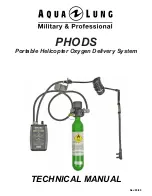
9
1.
2.
3.
4.
5.
6.
7.
8.
9.
10.
11.
12.
13.
14.
15.
16.
17.
18.
eXact
®
Micro 8 Tips For Best Accuracy
About the eXact
®
Micro 8 TR7 MENU
Become familiar with the meter and the different tests by reading the instructions carefully.
Observe the dip time (
as required for the test
) for accurate results.
Be sure the
CELL
is filled to capacity (4ml), especially for tests like pH.
Rinse the
CELL
with clean water immediately after completing the test.
(Some test reagents will
stain or coat the CELL)
Just before testing, rinse the sample
CELL
with the sample water several times to get a
representative sample. (
Use deionized or distilled water for rinsing if you have a limited sample
).
Store the meter and all test materials out of direct sunlight and away from chemical storage areas.
Minimize exposure of meter and test reagents to heat above 100°F (38°C).
Dry the outside of the meter when testing is complete or before storage of the meter.
Each eXact
®
Strip Micro is valid for
ONLY
one test. Discard strip after single use in regular trash
that is inaccessible to children and pets.
Each bottle of eXact
®
Strip Micro contains the quantity of strips notated on the bottle. Due to the
manufacturing process, you may find one or two strips that are noticeably smaller or larger in
width than the normal strips in the bottle for the test. These should be discarded. Using these
strips may give unreliable results.
Each conversion table supplied has a unique revision number located in the bottom right corner of
the chart. It is recommended that you visit www.sensafe.com at least every 6 months to check for
any updated revisions for conversion chart or methodology.
Tests are calibrated at 75°F +/- 2°F (24°C +/- 1°C). If water sample is 60°F (15°C) or cooler, most
tests may require additional time for full chemical development. At the end of the normal test
procedure, press
READ
again and compare value after this countdown. If the new value is higher,
then use the new value for your result. When possible, it is recommended that the water sample
be warmed to room temperature before testing.
Normally the mixing cap is used for tests like Iron. A stirrer (such as a clean, plastic coffee stirrer)
may also be used in place of the mixing cap. Use the stirrer with gentle, back and forth motion,
during the 20-second countdown timing.
Our lab testing with the Micro 8 meter has shown that zeroing and measuring of the sample does
not require any cell cover for accurate results, even in full sunlight.
Remove batteries when meter is not used for more than a month.
Clean cell with 0.1N HCl before filling the meter with the sample to be tested for Iron. This is
especially important when testing low levels of Iron after running a Sulfide test, which uses an Iron
reagent. It is recommended that Iron testing be done before Sulfide testing if possible.
Rinse the
CELL
with clean water immediately after completing the test
. A stained cell will need to
be cleaned according to procedure as described in About the Built-In Cell/Cleaning Cell (page 10).
Do not drop meter. This may cause meter to stop functioning or result in broken CELL or display.
These kinds of meter failures are not covered by the warranty.
TR7: Different ions react with a specific indicator to form a color or a precipitate that proportionally indicates the
concentration of the ion present by the transmission value found. A conversion chart is then used to determine the
ion concentration using the transmission value. The advantage of using transmission measurement is that many
different ions can be determined in one MENU, which expands the flexibility of this meter. Once you have
determined the %T result for the test you ran, find this %T result in the conversion chart and read the concentration
corresponding for this %T. The Micro 8 gives the %T values as 3 digits (example 99.2) but only the first two digits are
used in the charts (round off your %T value to two digits). Tests that can be used with the Micro 8 in TR7 MENU are
listed on page 11. Typically, common tests are supplied with the conversion chart in this booklet. For conversion
charts and information about the tests not given in this booklet, visit our website. You can also use the TR7 MENU to
develop your own custom conversion chart for unusual samples or uncommon tests
.






























